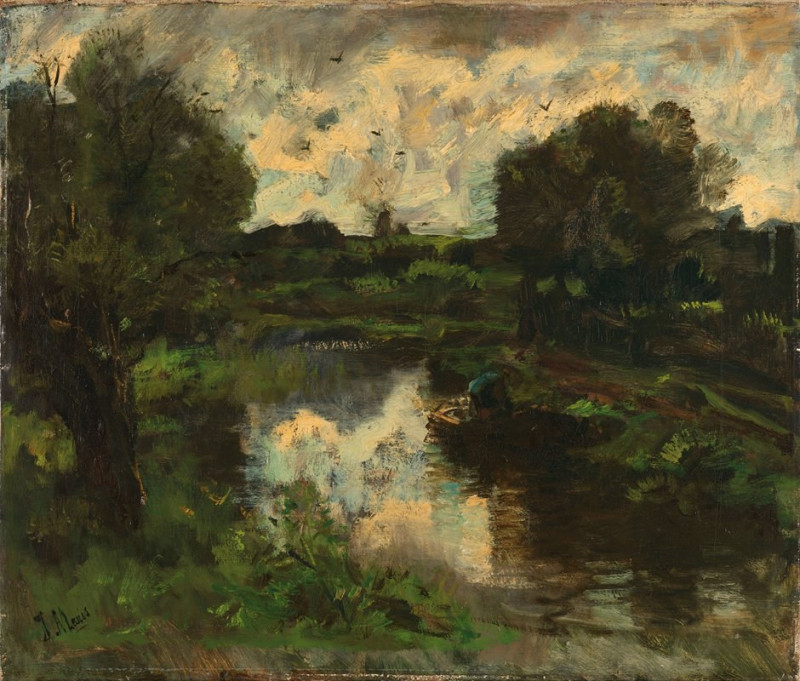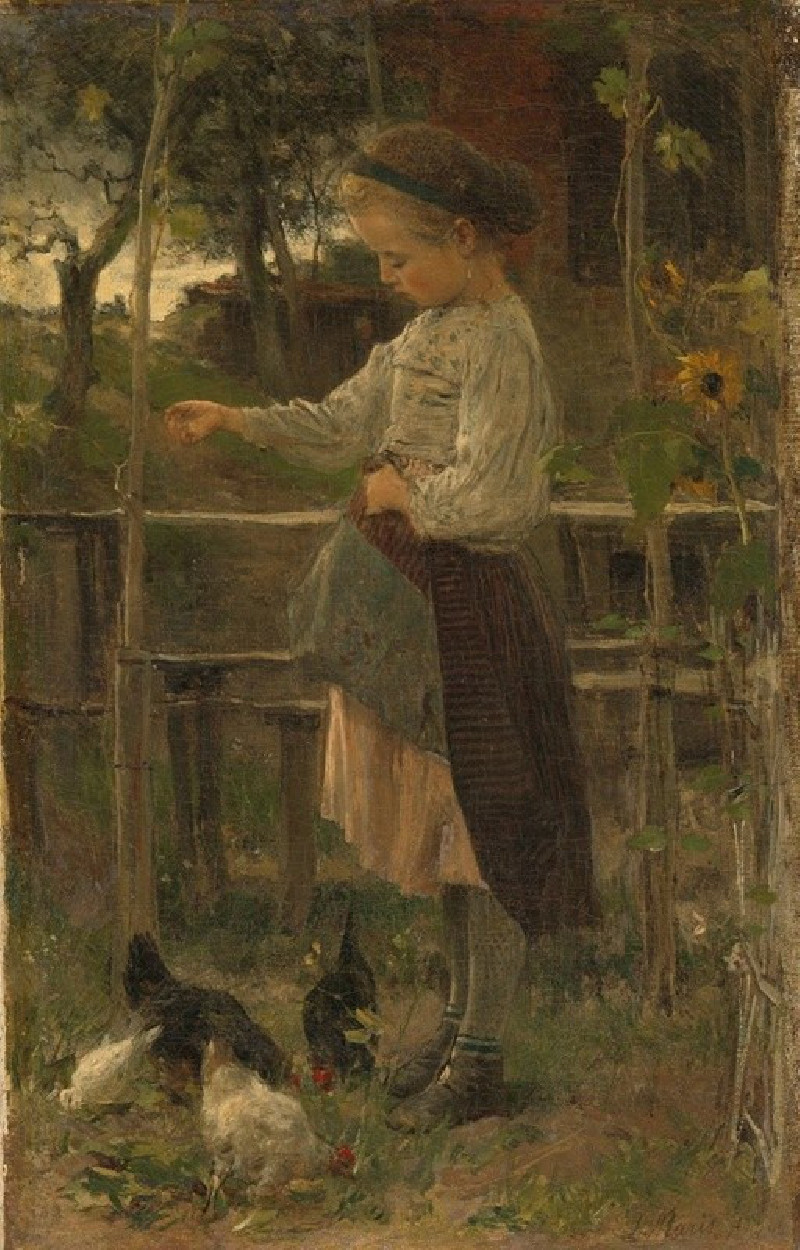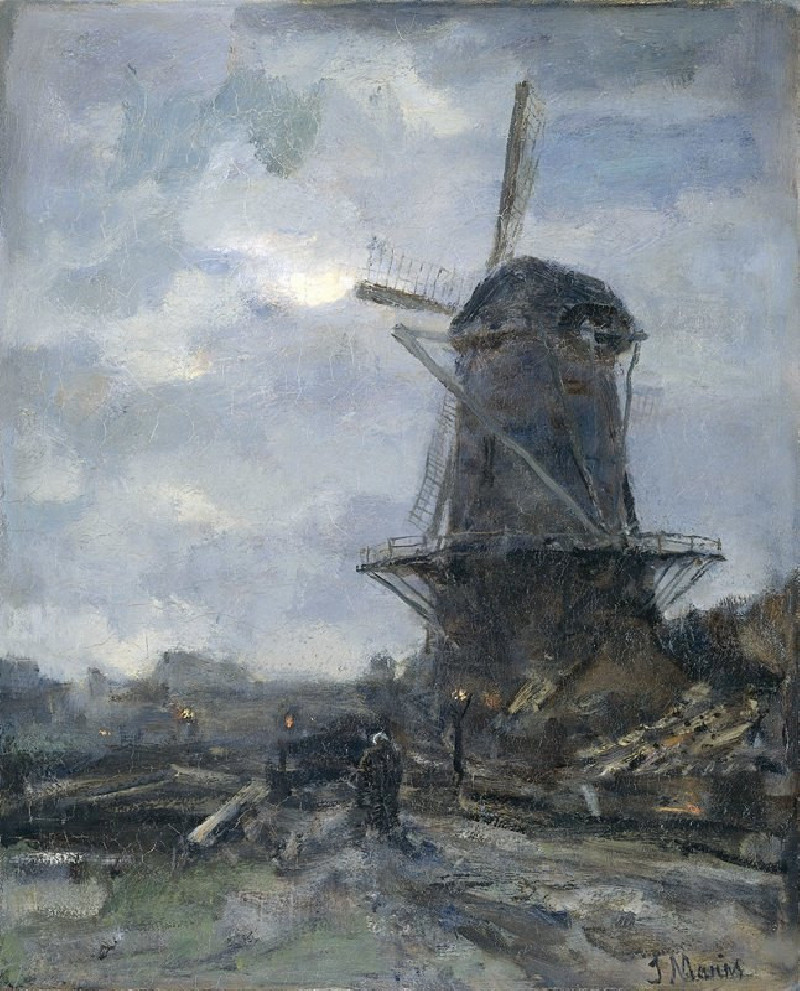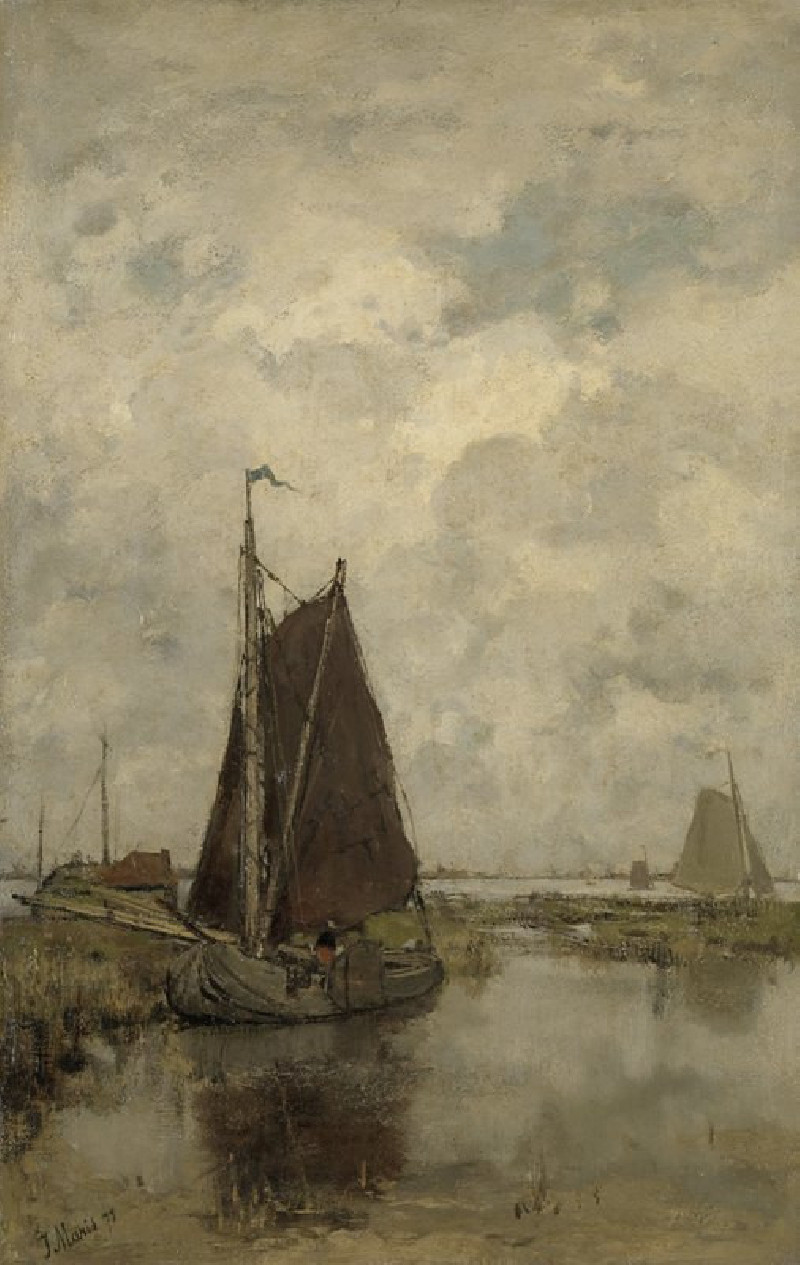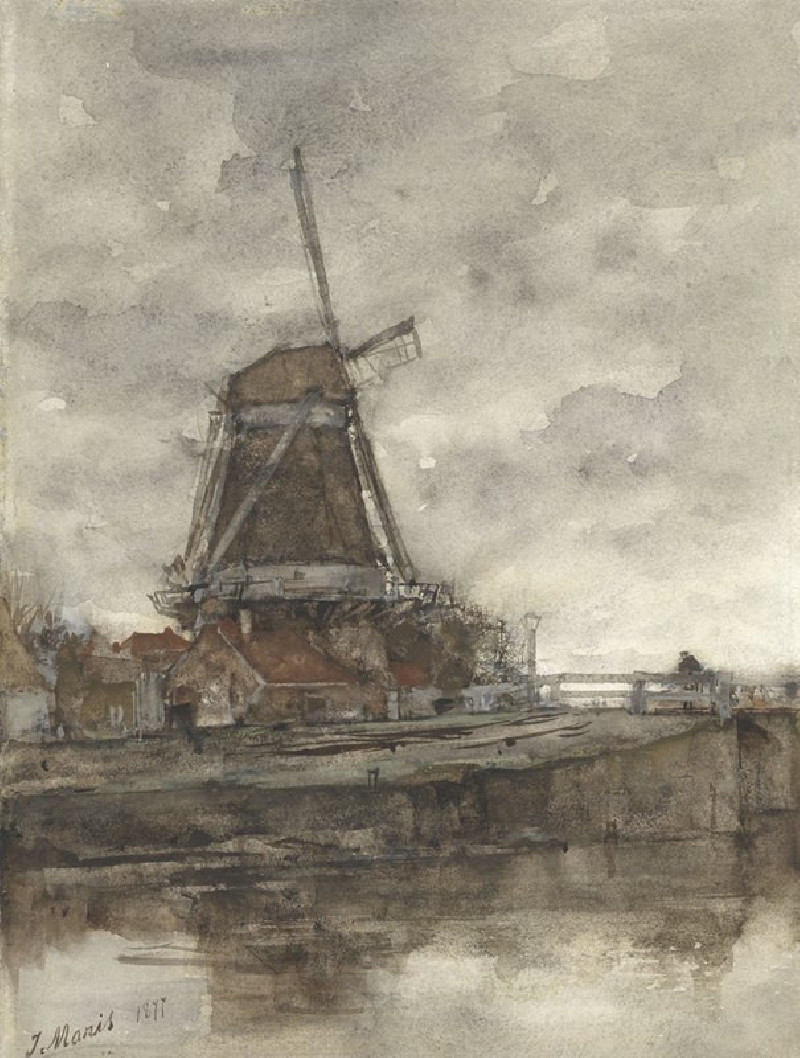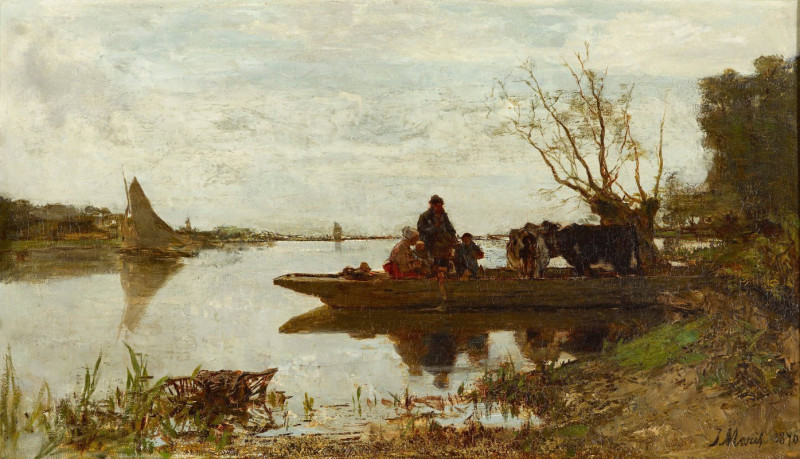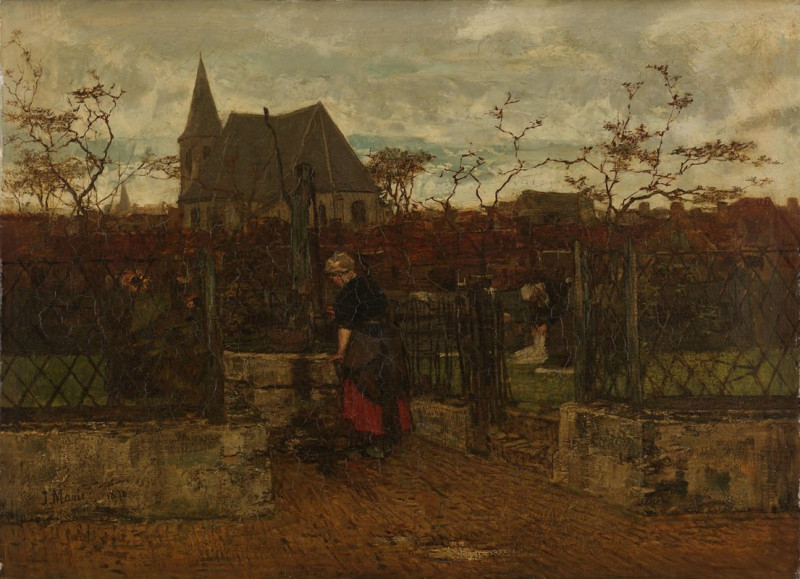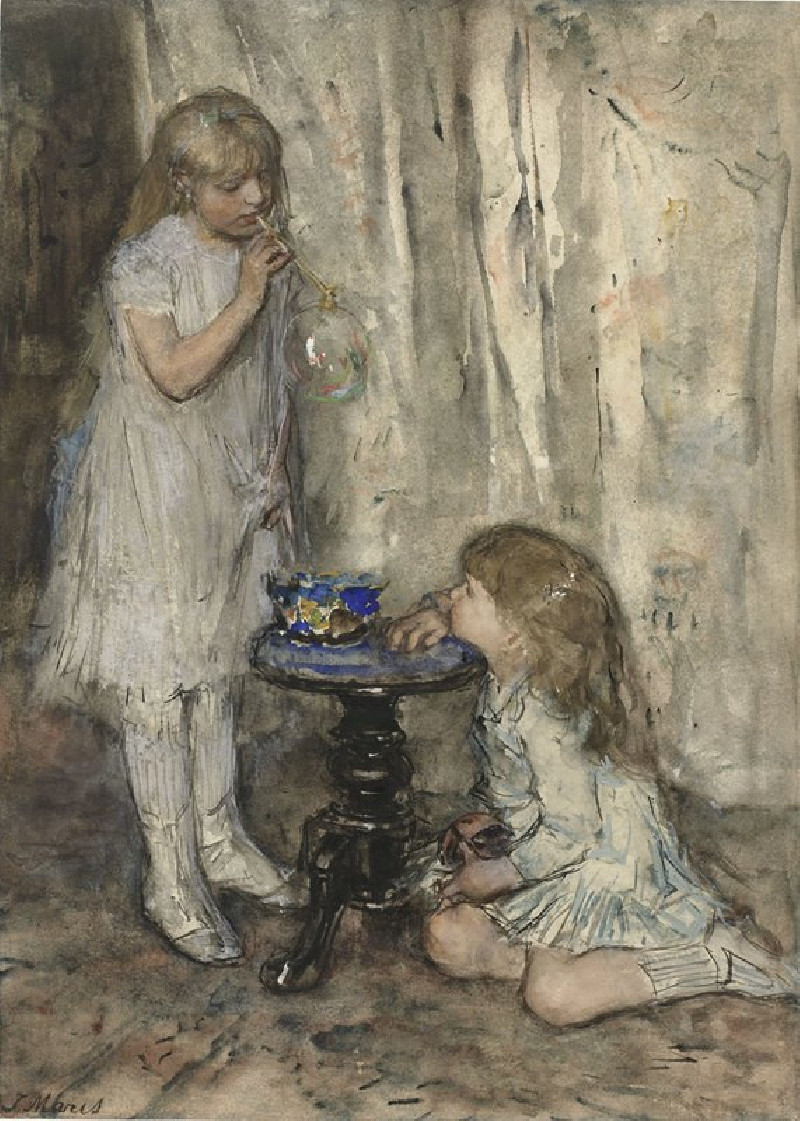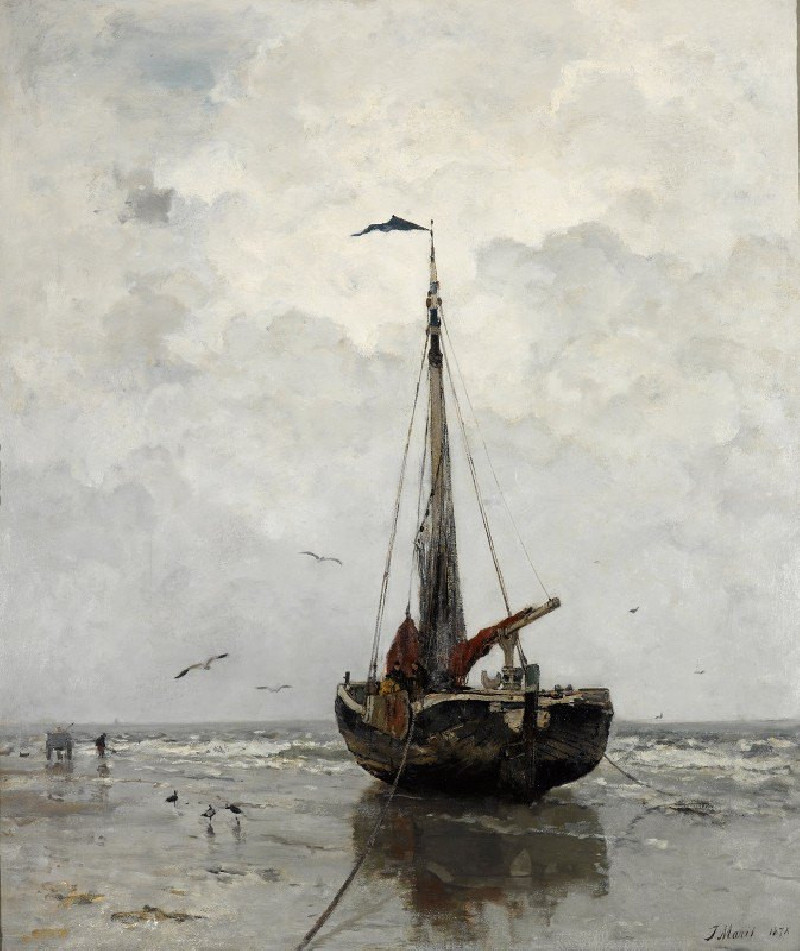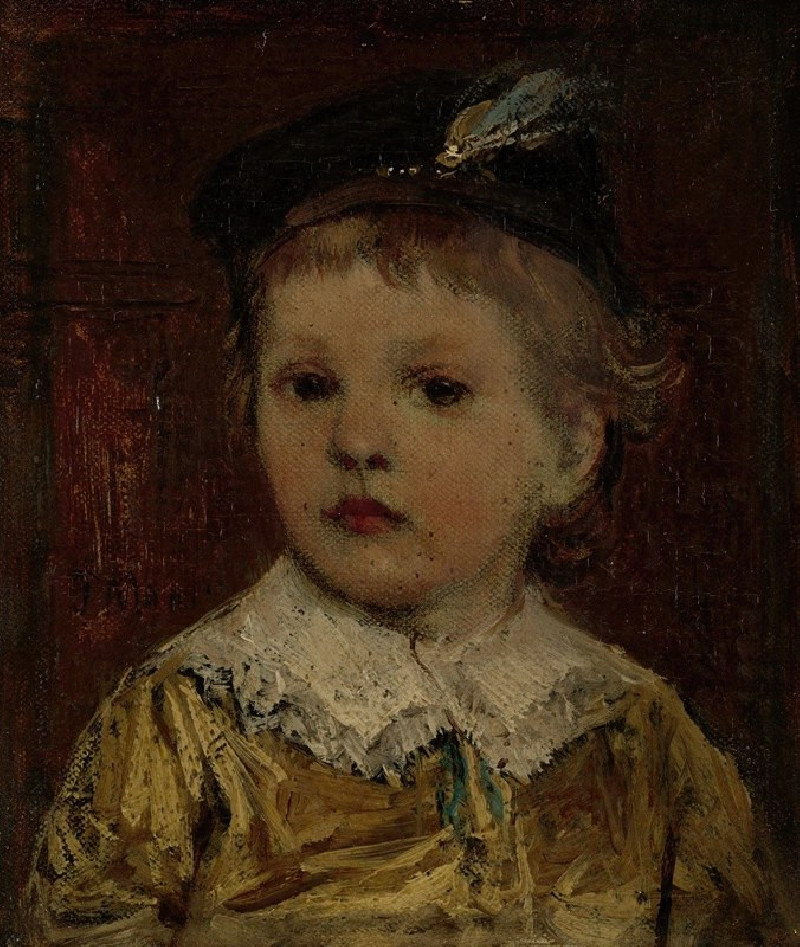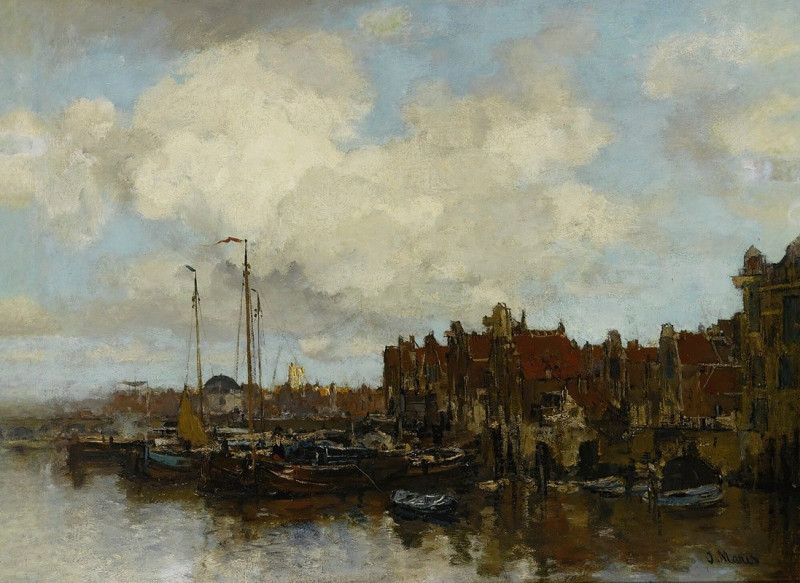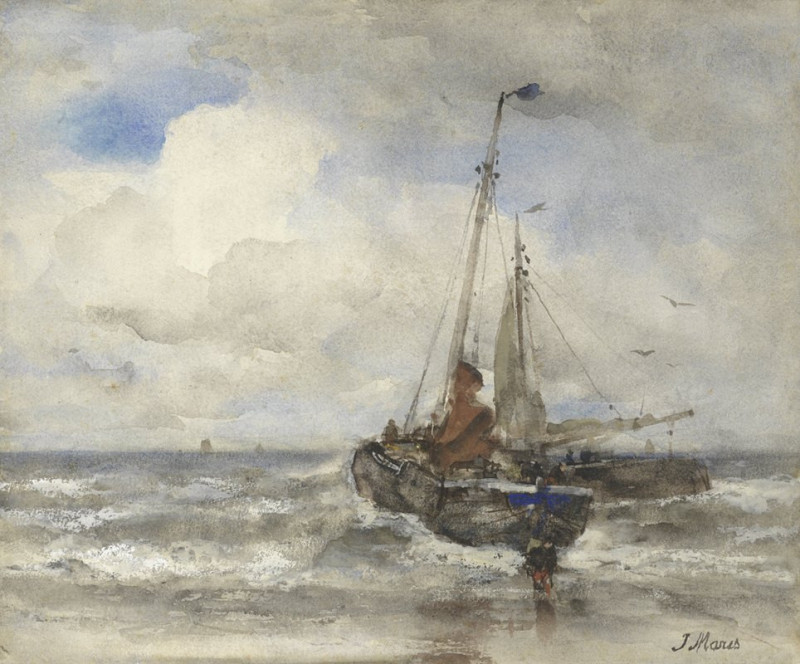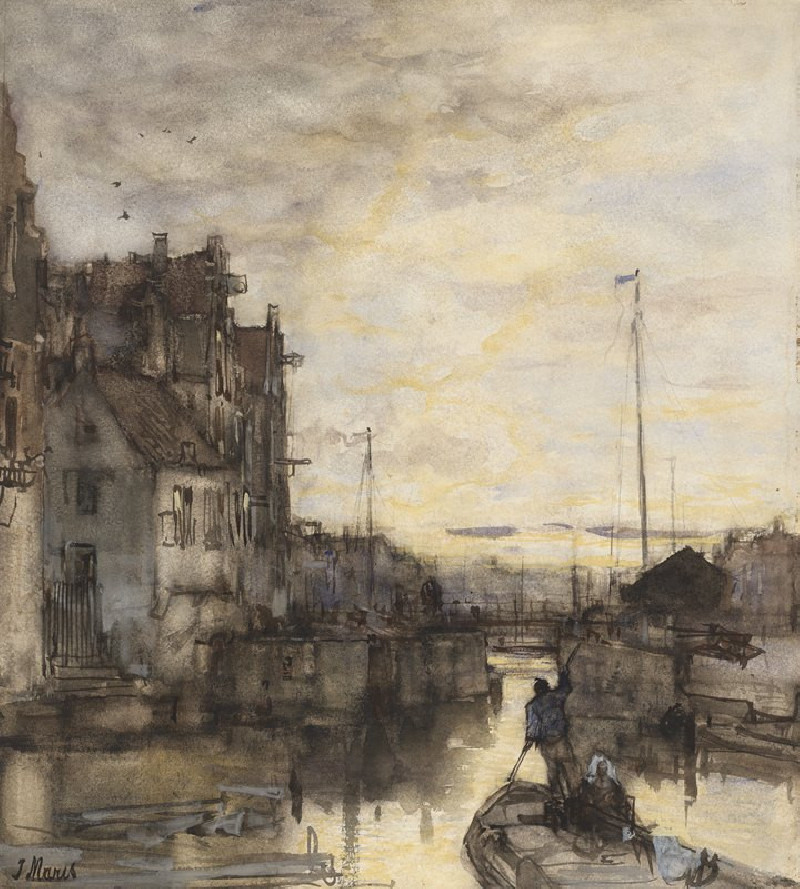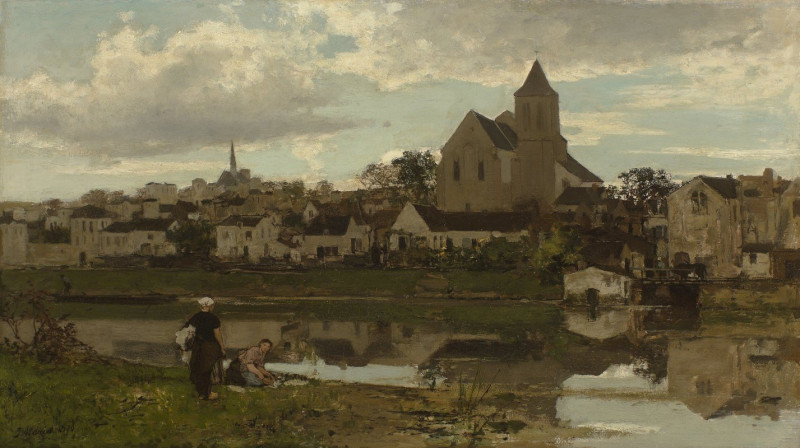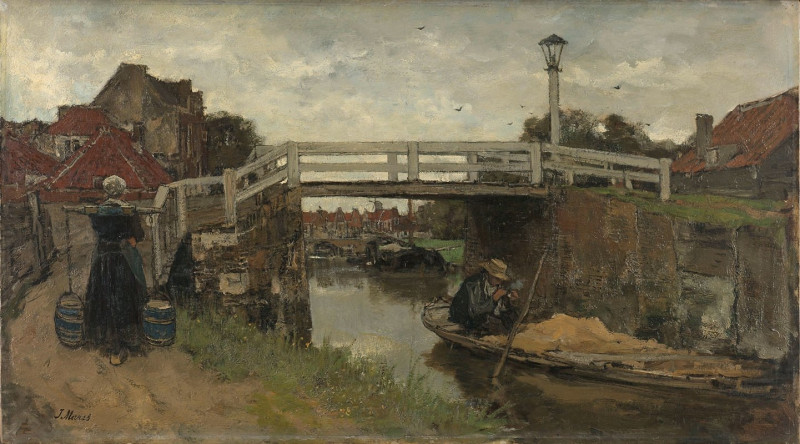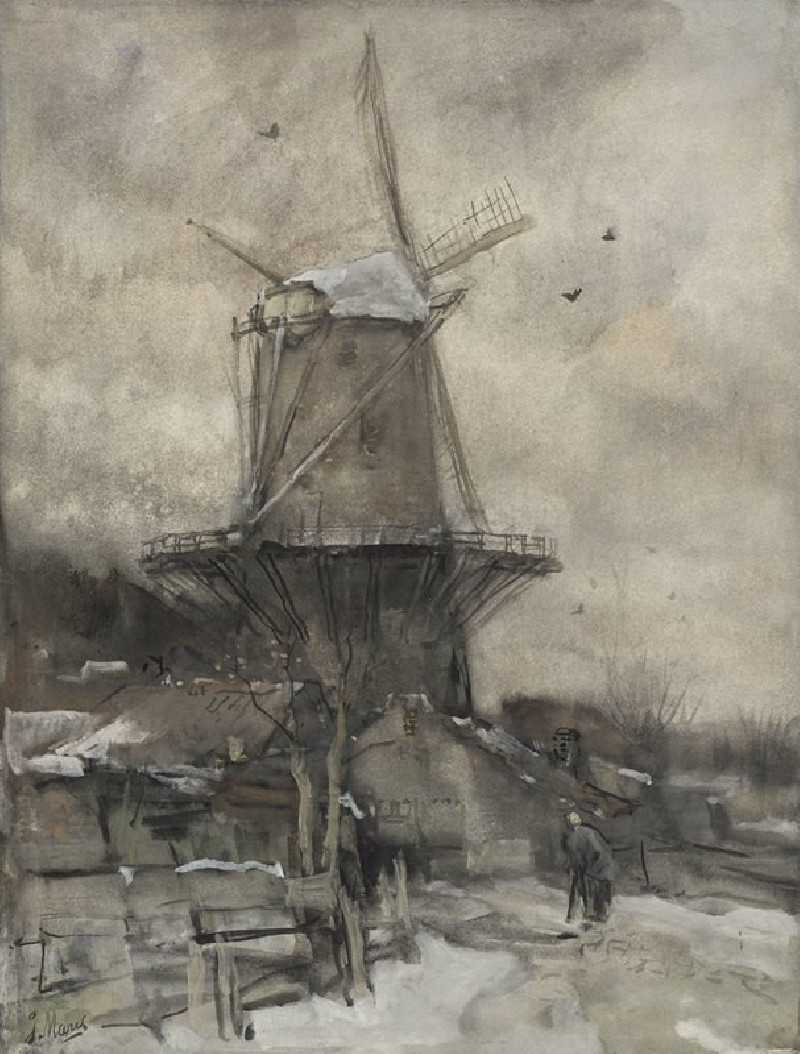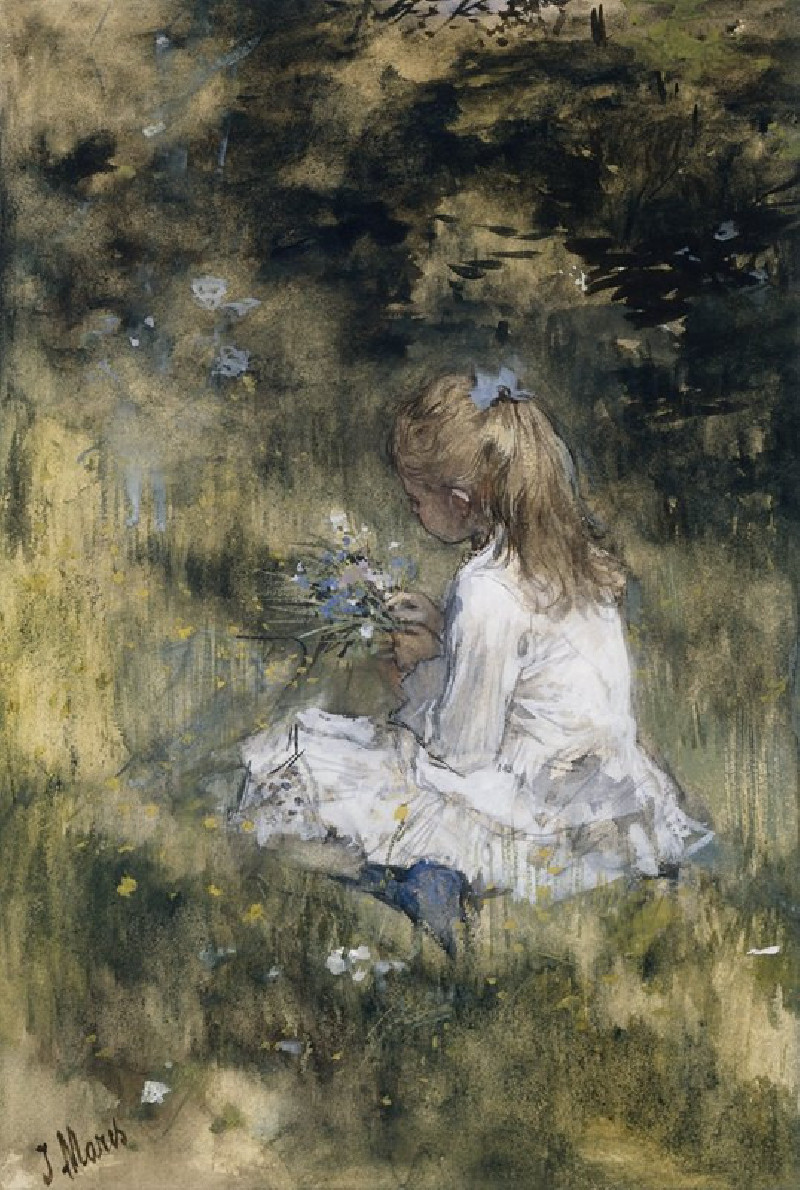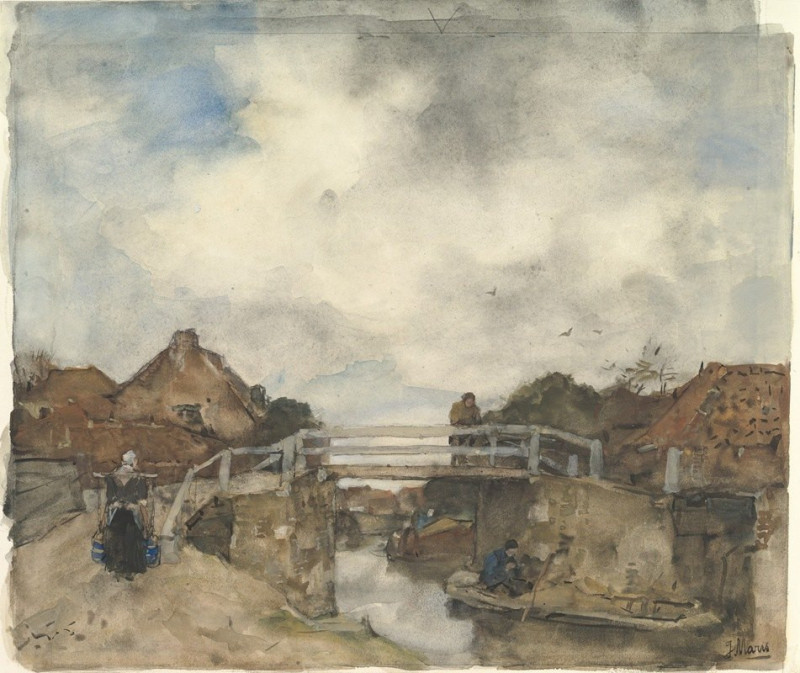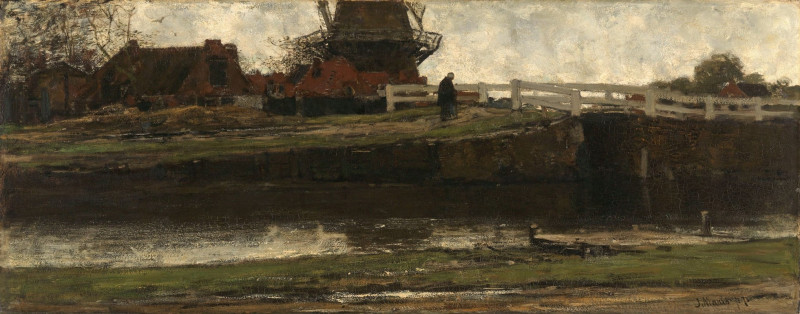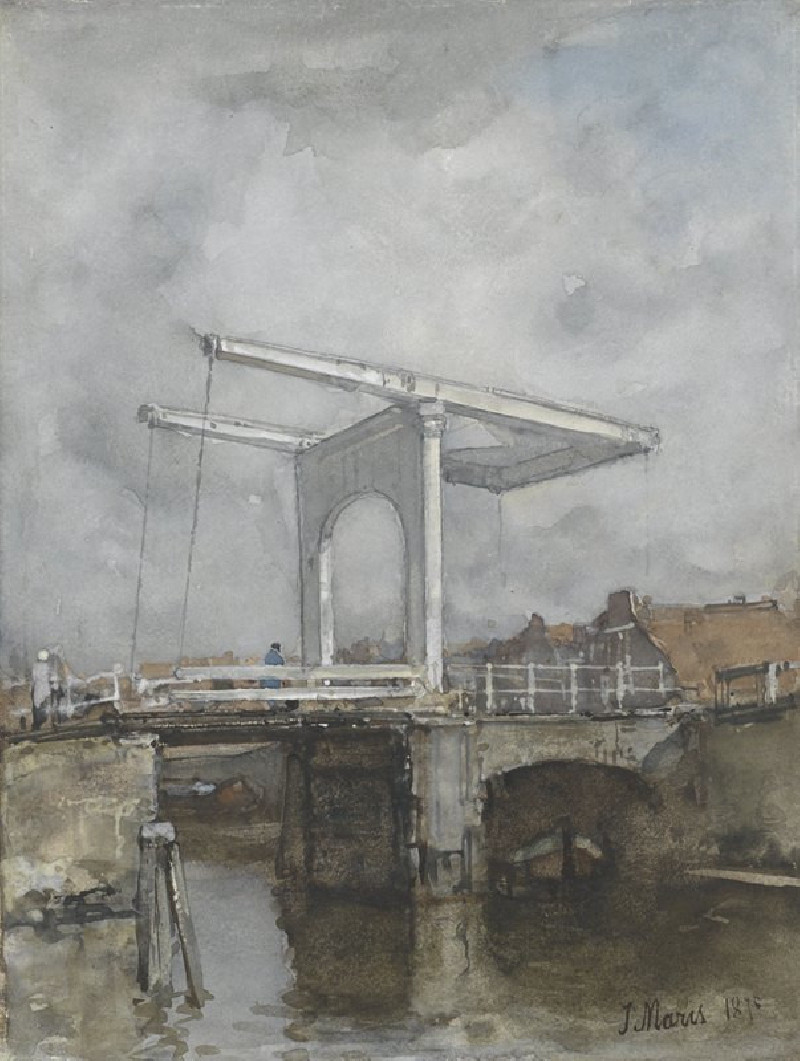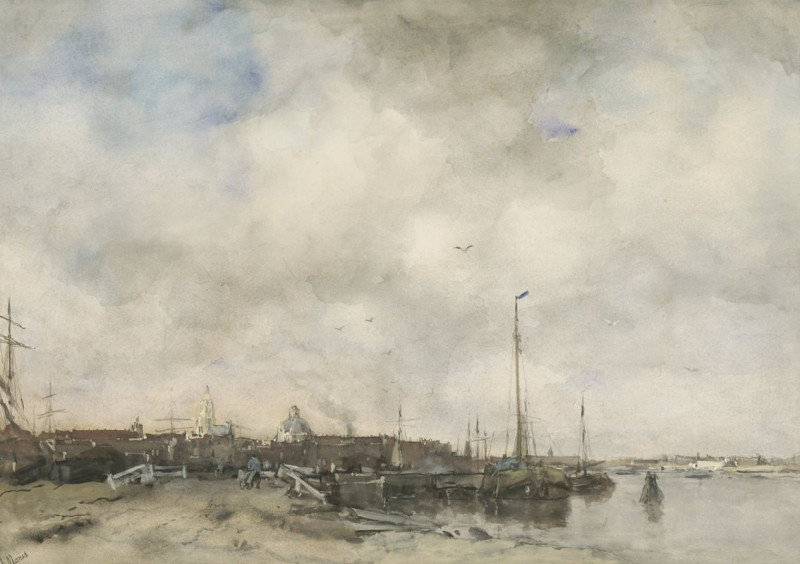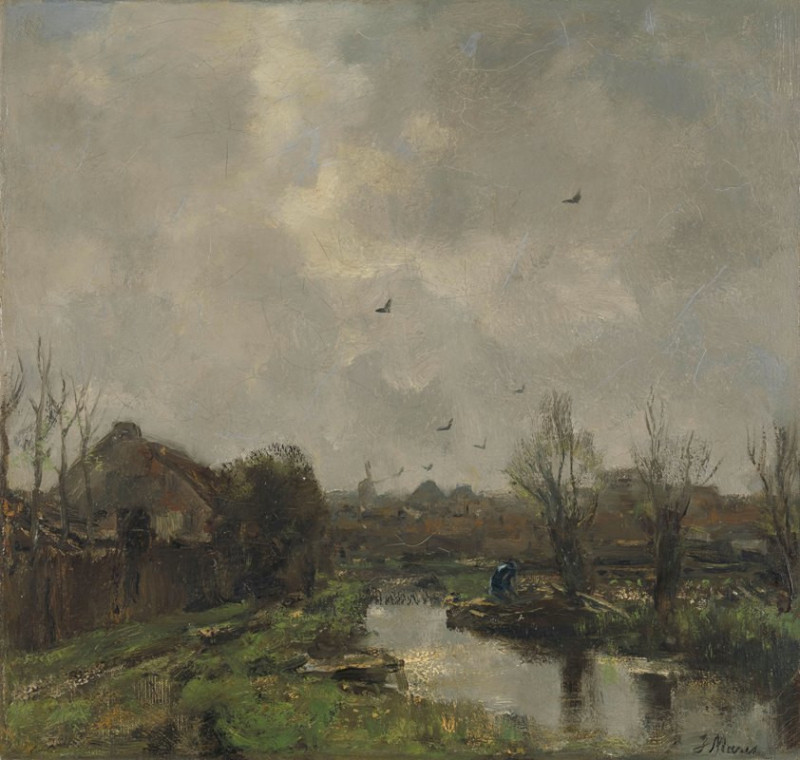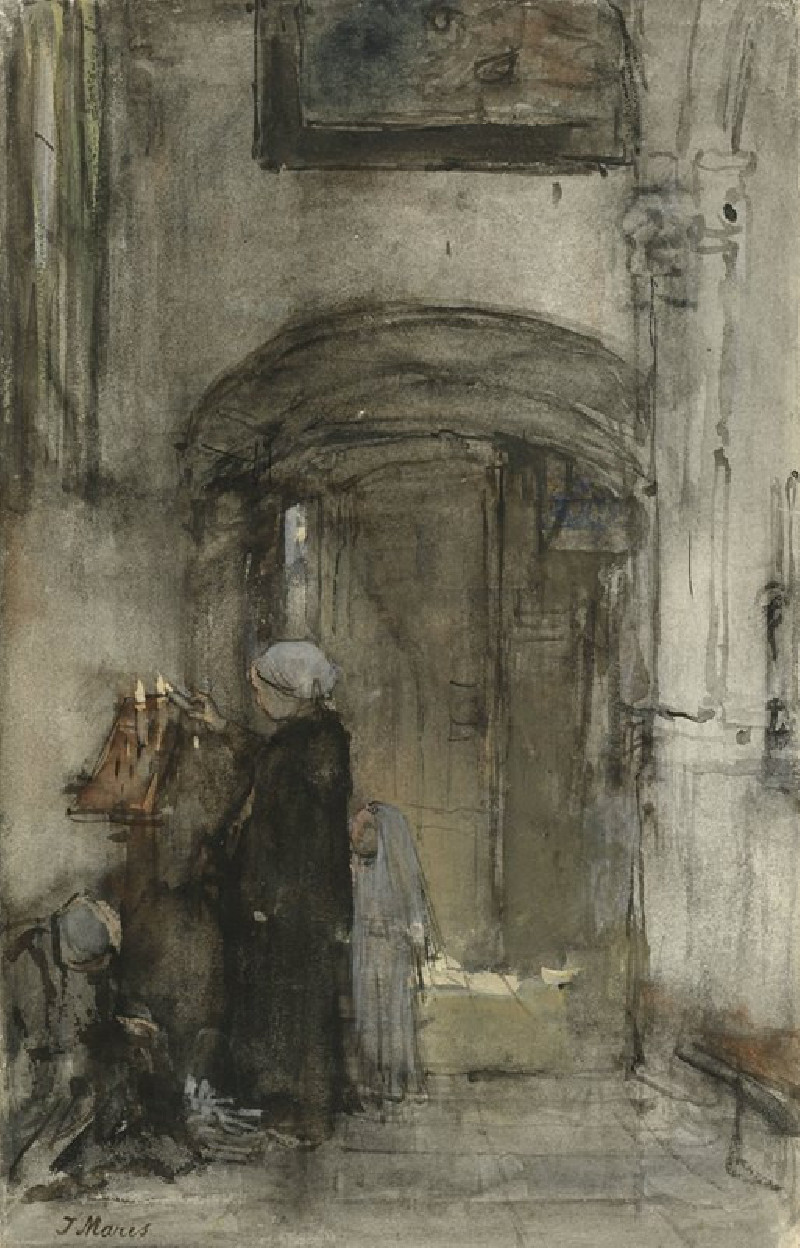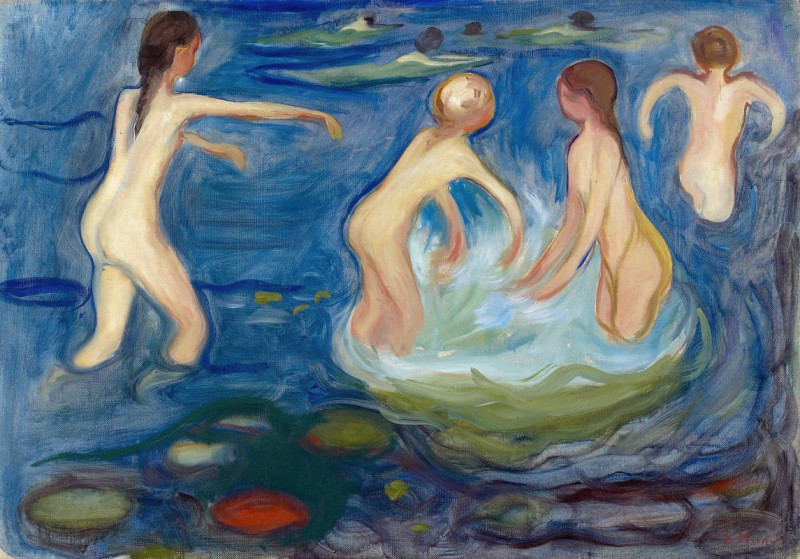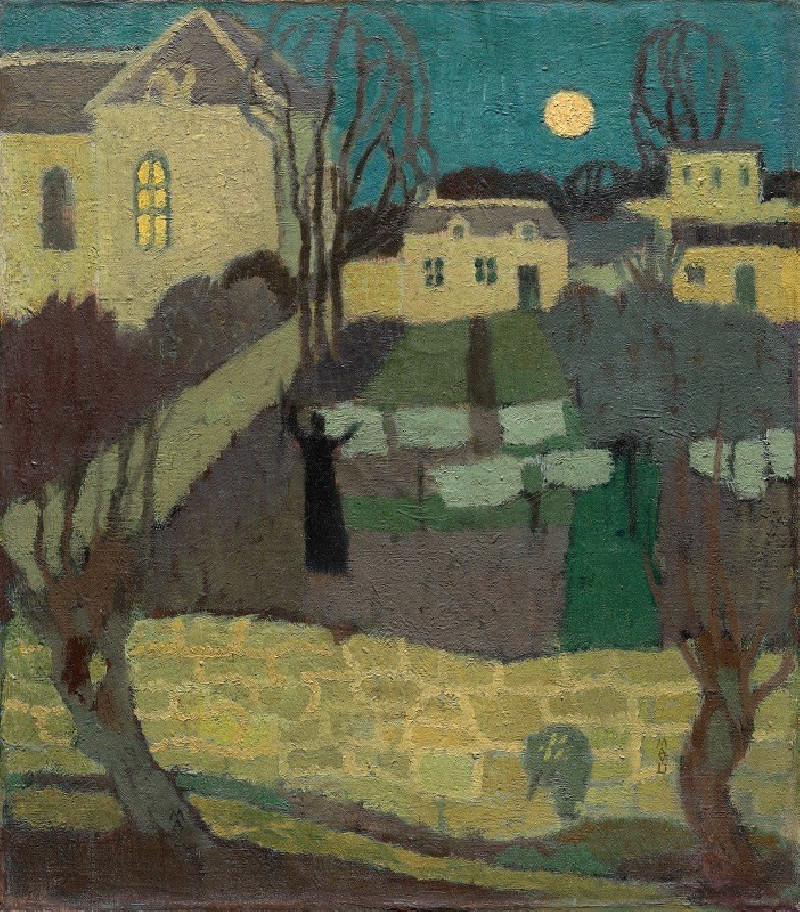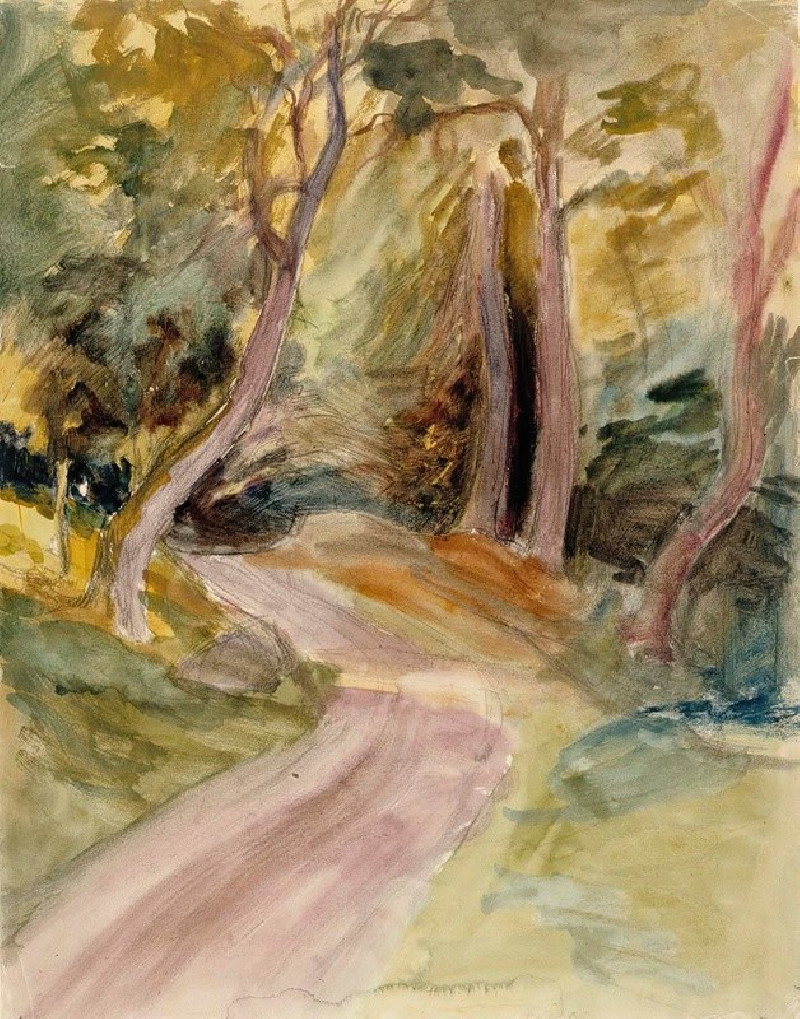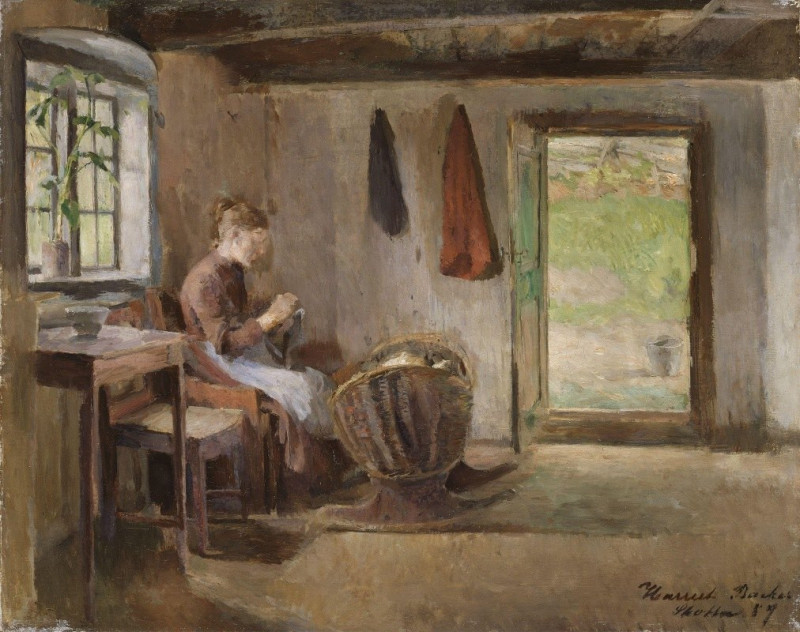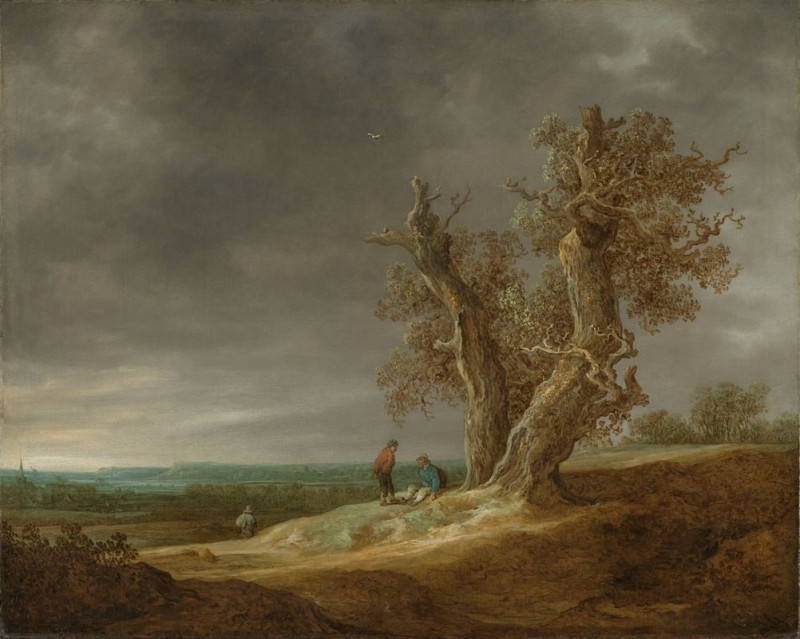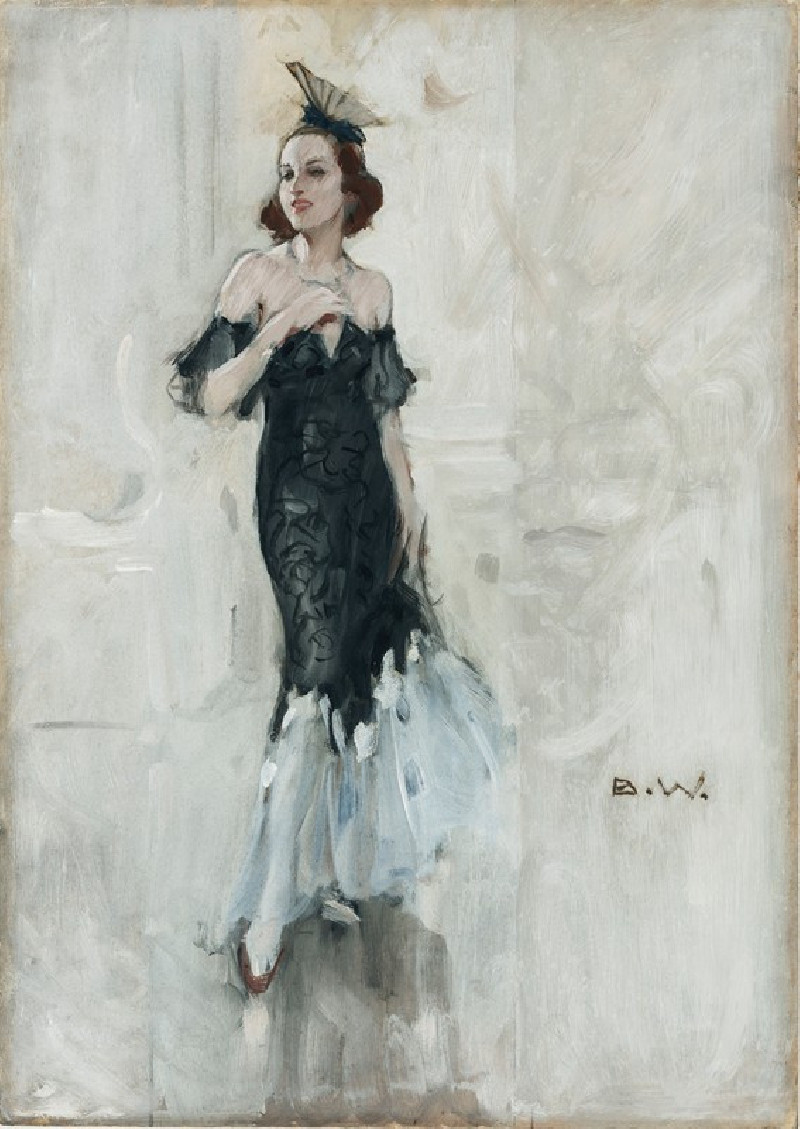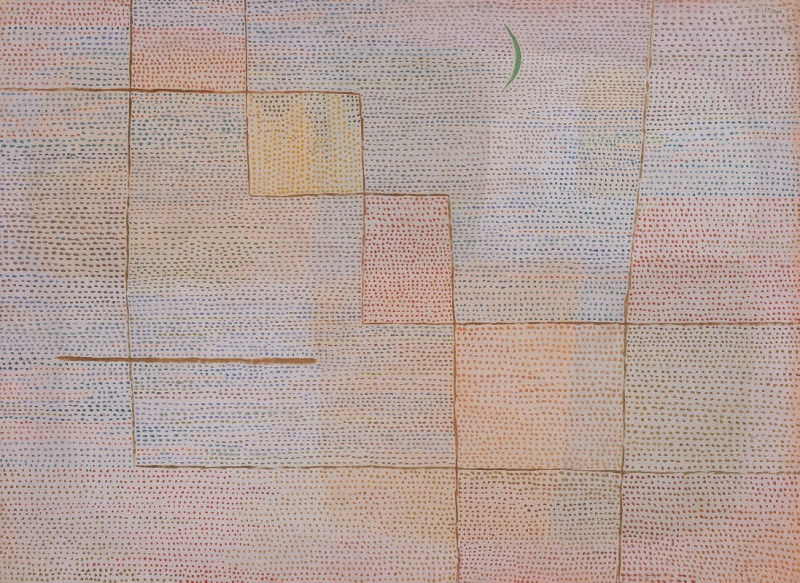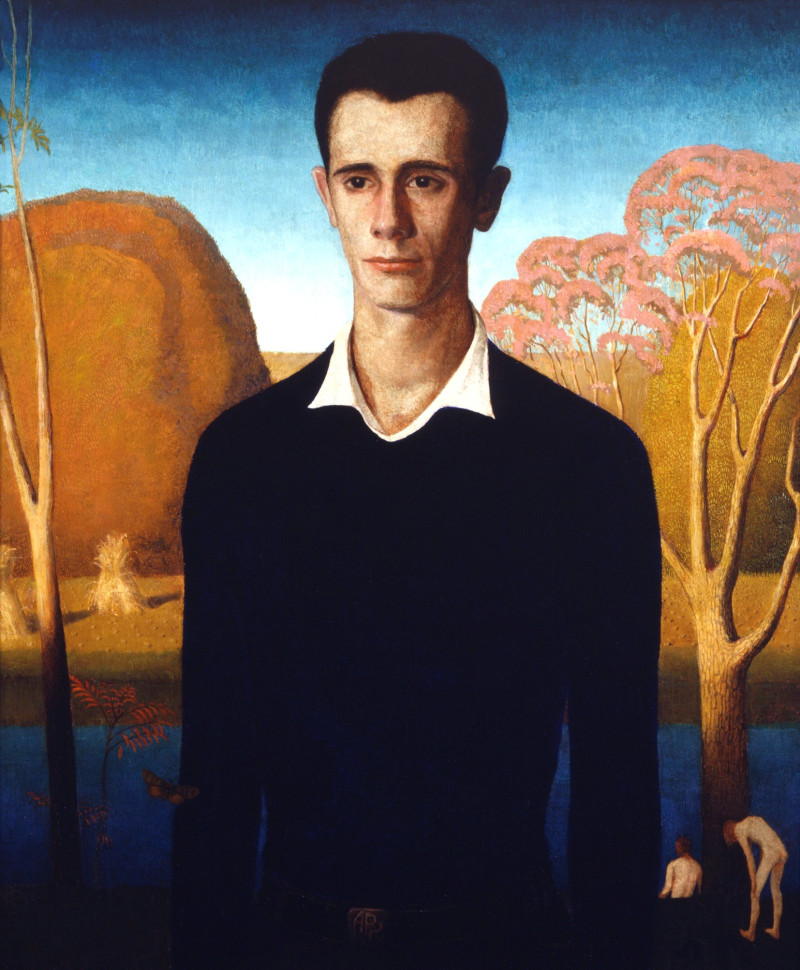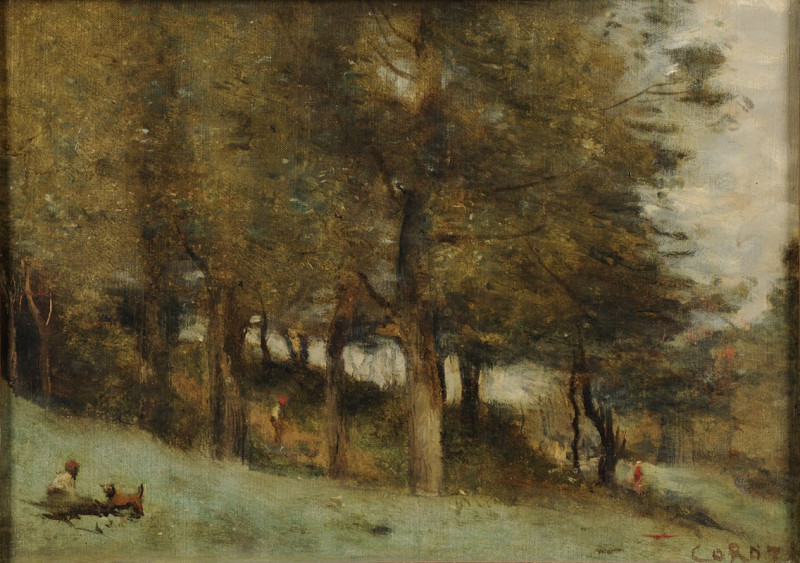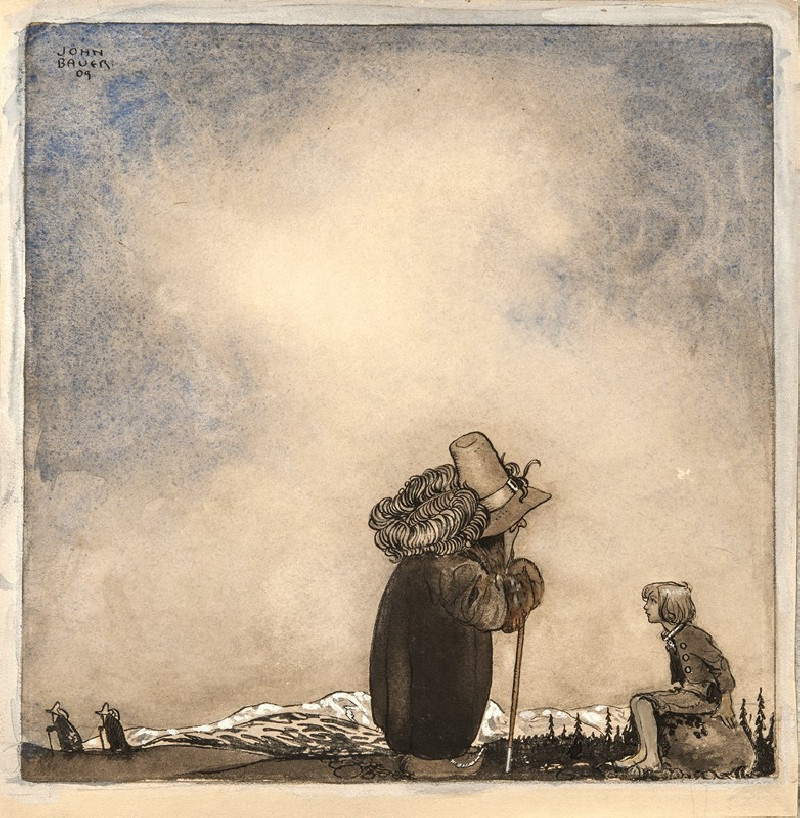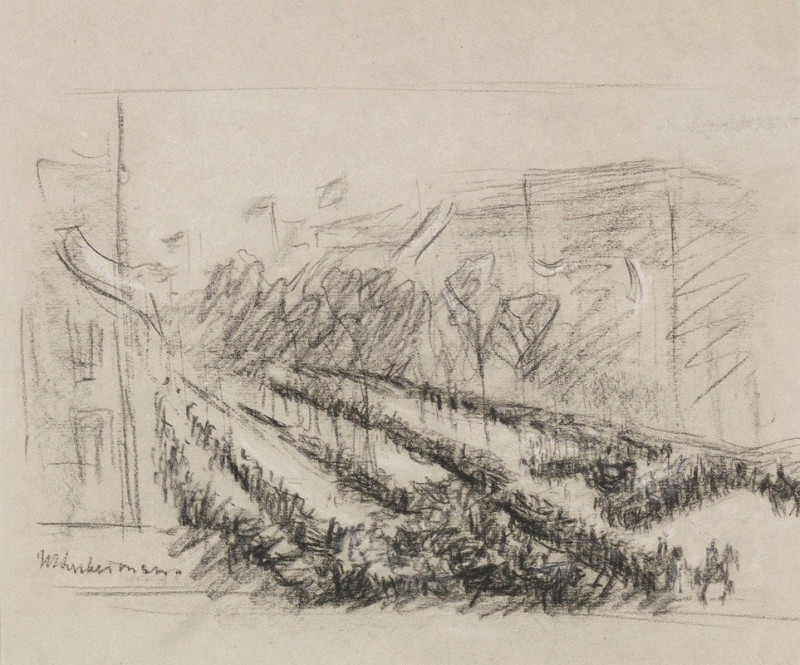A Polder Landscape after a Thunderstorm (c. 1892)
Technique: Giclée quality print
Recommended by our customers
More about this artwork
Jacob Maris, a pivotal figure in the Dutch Hague School, captured the essence of Dutch landscapes with a profound sensitivity to light and atmosphere. His painting "A Polder Landscape after a Thunderstorm," painted around 1892, is a splendid example of his artistic prowess.This atmospheric piece depicts a serene polder—a low-lying tract of land enclosed by dikes—in the tranquil aftermath of a storm. The painting is dominated by a somber palette, with dark greens and browns that illustrate the wet earth and lush vegetation typical of a well-watered Dutch countryside. A reflective water body at the center acts as a mirror, catching the fleeting, turbulent sky where the last vestiges of the storm hang in the air.Noticeably, Maris has skillfully used brush strokes to render the dynamic, swirling clouds and the softened light piercing through them, illuminating parts of the landscape and creating a play of light and shadow. A lone figure, perhaps a farmer, is subtly integrated into the scenery, bent over near the water, suggesting the perpetual human engagement with the land.Birds soaring in the sky suggest a return to calm and normalcy following the storm's disruptive passage.
Delivery
Returns
Jacob Henricus Maris (August 25, 1837 – August 7, 1899) was a Dutch painter, who with his brothers Willem and Matthijs belonged to what has come to be known as the Hague School of painters. He was considered to be the most important and influential Dutch landscape painter of the last quarter of the nineteenth century. His first teacher was painter J.A.B. Stroebel who taught him the art of painting from 1849 to 1852. Jacob Maris's most known works are the series of portraits of the royal House of Orange, he worked on these with his brother Matthijs Maris. He is also known for landscapes such as Ship on the Scheveningen beach.

